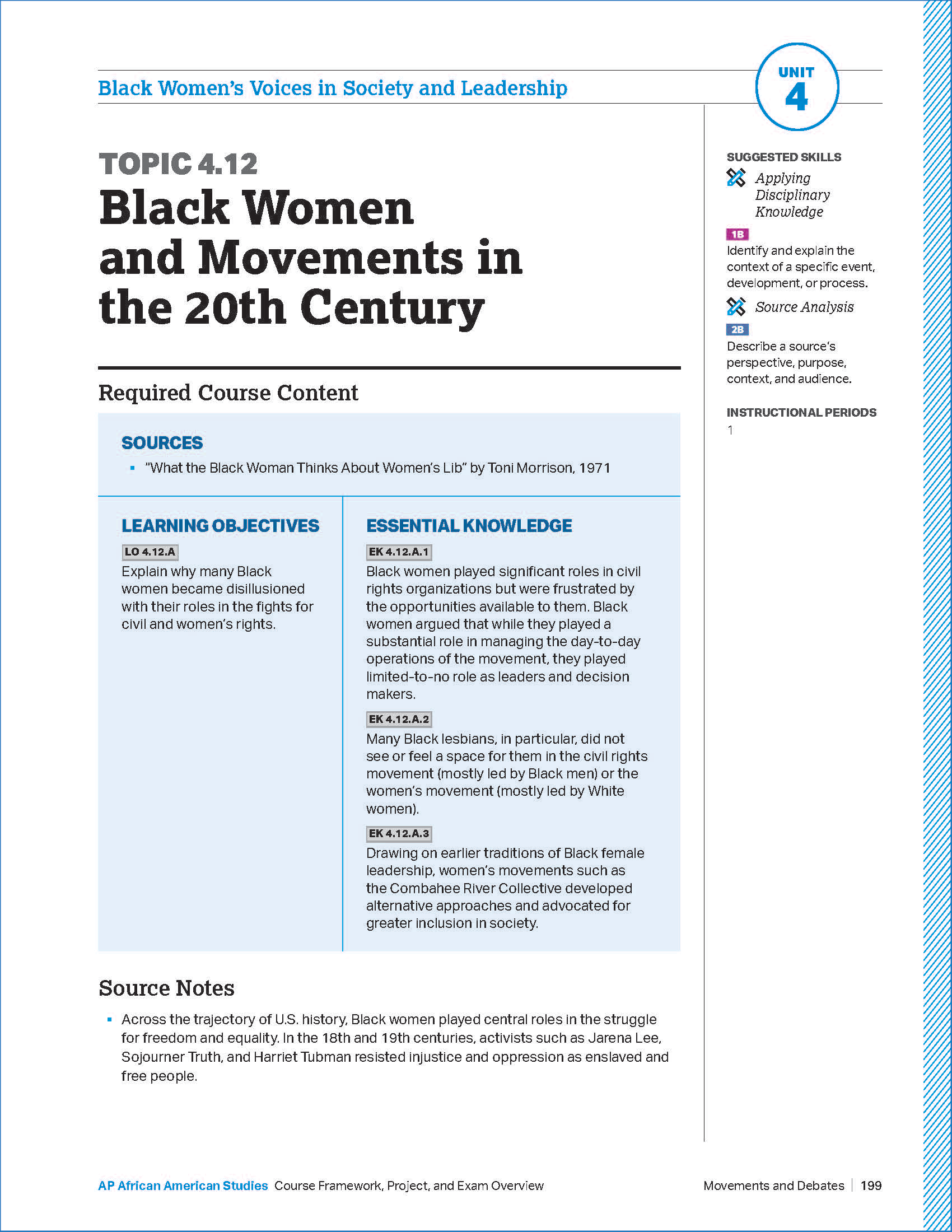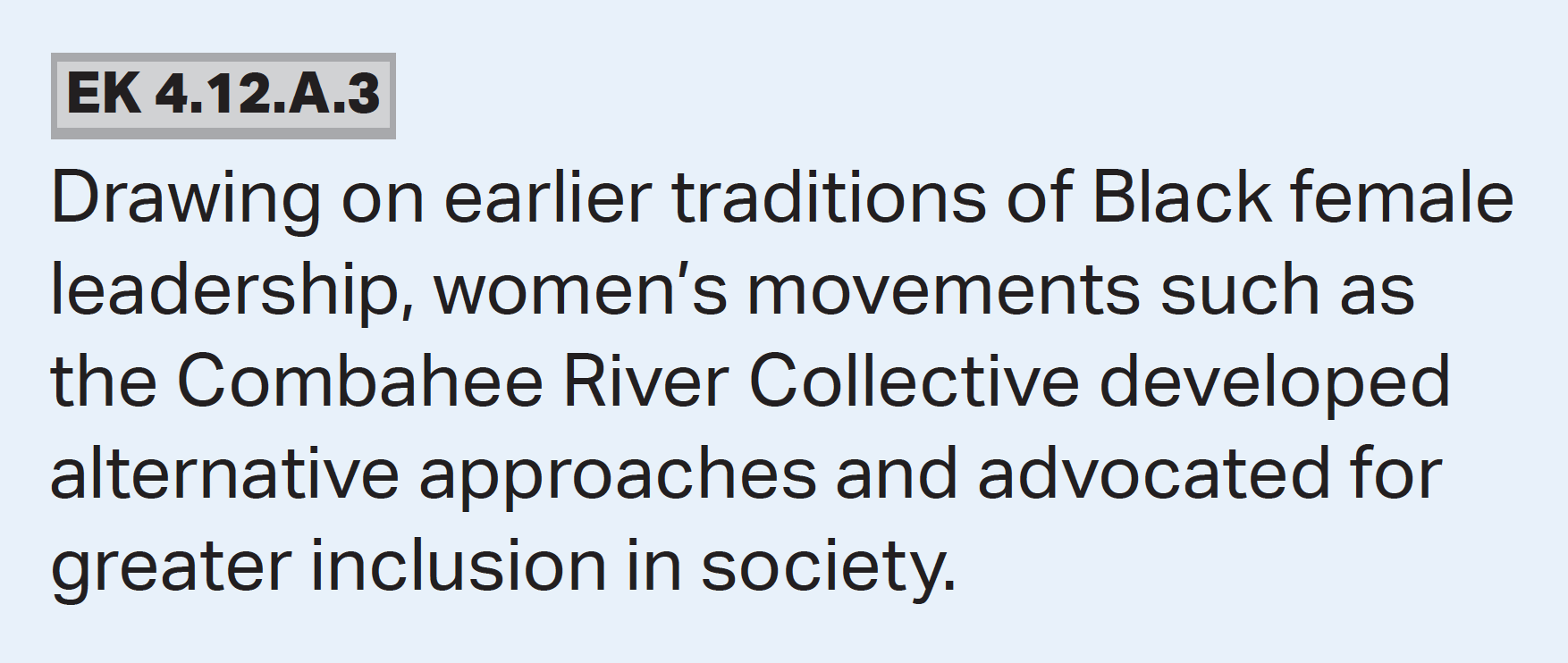How The New York Times Got It Wrong on AP African American Studies
This content was originally posted on February 1, 2023, in response to that morning's New York Times story. We later took it down, which has driven speculation about why we did so. The reason is that there’s been subsequent coverage from The New York Times about AP African American Studies, and we didn’t want to create confusion about which story the response was in reference to.
Today’s New York Times piece about the official AP African American Studies framework is a gross misrepresentation of the content of the course and the process by which it was developed.
The Times reporting is rife with inaccuracies. Despite their claim that Black feminism is “purged” from the course, the facts are that the course framework explicitly includes this material as required content. That section, Black Women and Movements, can be seen below:

Note especially the last required topic: Black lesbians’ special role in developing alternatives to mainstream feminism are cited explicitly, including the Combahee River Collective.

The Times reports that gay experience is not in the course, but deliberately ignores that several explicit references to gay Black Americans were included. In addition to the previous material about the role of Black lesbians, a section was also included in the Civil Rights Movement portion calling out Bayard Rustin and Pauli Murray by name and noting their contributions as required content.

The Times argues the revisions were made in response to Florida, despite the fact that the College Board has time-stamped records of revisions from December 22, 2022. The article simply ignored that the core revisions were substantially complete – including the removal of all secondary sources – by December 22, weeks before Florida’s objections were shared.
The fact of the matter is that this landmark course has been shaped over years by the most eminent scholars in the field, not political influence.
Dr. Robert Patterson, Professor of African American Studies at Georgetown University and co-chair of the committee of professors and teachers who developed this course, gives the facts of the revision process as follows: “The development of the AP African American Studies course has been an on-going, iterative process that calls upon the expertise of teachers, professors, and experts who understand the key concepts, themes, and methodologies of African American Studies, and this refining process, which is a part of all AP courses, has operated independently from political pressure.”
Dr. Kerry Haynie, Dean of the Social Sciences and Professor, Department of Political Science and Department of African & African American Studies at Duke University, and member of the development committee, put today’s Times story in stark relief: “It’s wildly misleading, at best. We reject any claim that our work either indoctrinates students or, on the other hand, has bowed to political pressure.”
While the leaked and much discussed pilot framework experimented in the assignment of secondary or derivative sources – a privilege of a pilot phase – the fact is that no AP courses, not one, not ever, has required a list of secondary sources in their frameworks. Specific theories in secondary sources, no matter how brilliant, are not part of required AP topics. The Times ignores this fact, and their reckless mischaracterization of our processes and motives is deeply damaging to the promise of this course and the millions of lives it could enlighten and enrich.
The Times reporting is an outlier to otherwise accurate reporting about the framework. But most importantly, we encourage everyone to read the framework. Before criticizing this remarkable work of scholarship, we ask that you immerse yourselves in the facts of what’s there and why.
The AP Program is focused on our long-established processes for creating compelling, meaningful college-level coursework, and in creating an historic course in African American Studies that will make generations of students better informed than they are today.